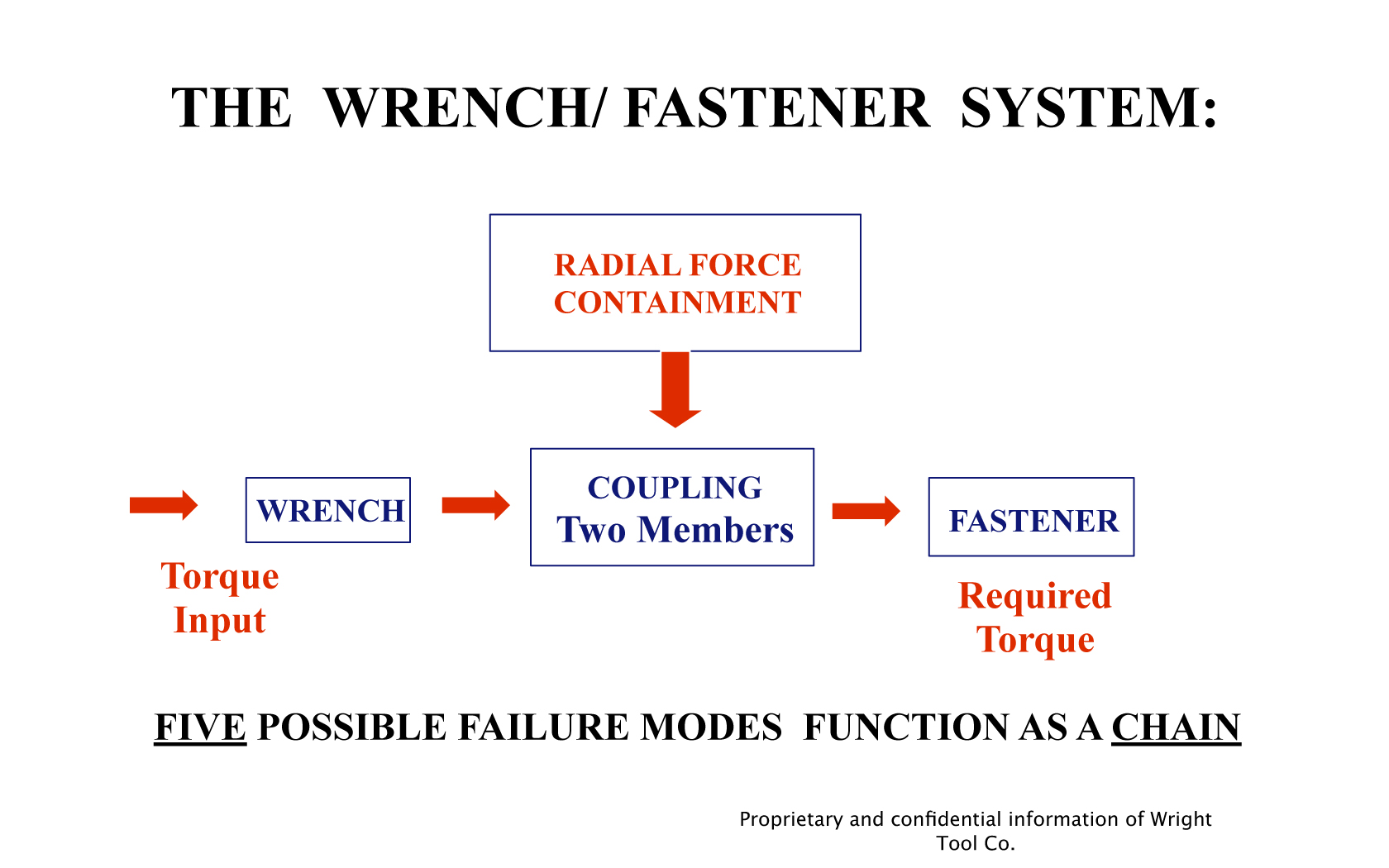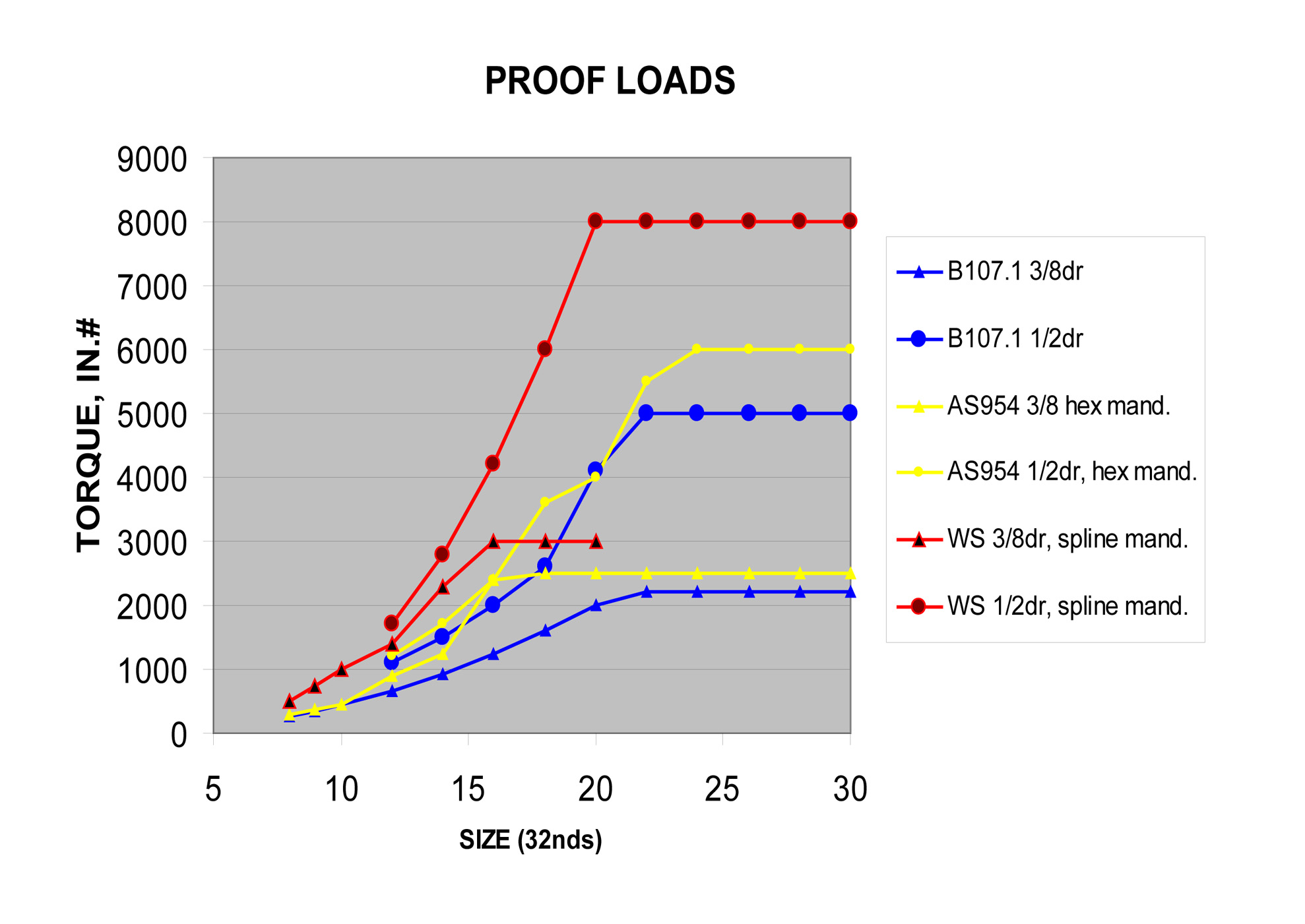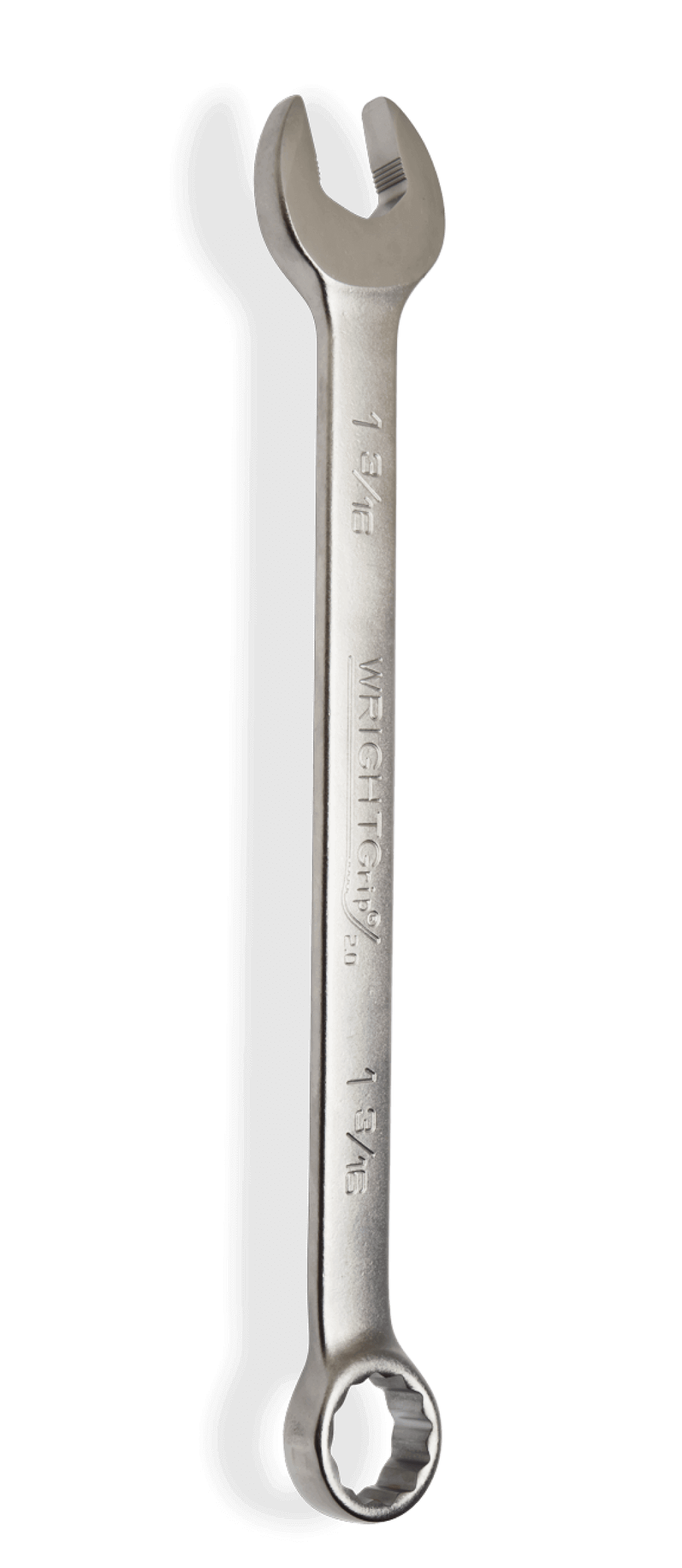June 23, 2023
How to Save Money, Time, and Weight with Better Fasteners and Wrenches
As a tradesman, it’s important to understand how you can save money and time. By realizing small improvements you can make, you can enhance your profitability. In this blog post, we provide you knowledge on how better fasteners and wrenches can help.
Change Wrenches!
Although it does not give the highest strength by any means, the simplest way of reducing wrenching problems is to recognize that all wrenches are not created equal in either design or manufacture. As Figure 1 shows, wrenches work together as a system to transmit torque to engaging surfaces to the body of the wrench. Traditional wrench and fastener designs produce large radial forces which tend to either split the wrench or shear the teeth off either the wrench or fastener under heavy loads. Figure 1 shows how these various factors interact to transmit torque. They function as a chain and the weakest link determines the strength of the combination. In the typical repair situation, the fastener is already in place and the user has the problem of removing a fastener which has been worn and perhaps even stretched or otherwise damaged. Since nothing can be done with the fastener, the best thing to do is to use the best possible wrench.

The strength of wrench/fastener combinations, which is what we are talking about when we talk about the capacity to remove a fastener, varies over a range of 330 percent. This covers a wide variety of fasteners and wrenches with substantial differences in cost. Some changes involve only changing the wrench and are not very expensive. See Figure 2. Others involve changing the fastener, which can best be done by the product designer.

It is amazing what can be done without changing the fastener itself. For example, almost everyone uses a common 12-point wrench to turn 12-point fasteners in aerospace. But if they use a spline wrench Figure 2 shows they can apply up to 15 percent more torque. Spline wrenches are expensive, but so is the cost of a user’s time and even more so the cost of a large machine or aircraft being down. A still more economical solution is to use the standard Wright Drive 2.0® wrench, our mass-produced product, which has 11 percent more strength than a standard wrench and is made to fit better and wear longer.
The next step upwards is to change the fastener as well as the wrench. In many cases, this can be done during maintenance when a troublesome fastener is removed and replaced with a higher-grade fastener. This does not require engineering approval. Either an engineer or at least a good handbook should be used to specify the correct tightening torque and a torque wrench should be used to achieve that torque.
Reduced Fastener Head Height
This has been used a number of times when achieving a weight target was critical but has often been replaced with full height headed fasteners upon rebuilding because of wrenching problems. However, all wrenches are not created equally, and the wrenching problems may be solved by using a higher grade of wrench and replacing them as soon as there is any wear at all because there is a significant loss in strength with wear.
A better approach is to switch from 12-point to 12-spline fasteners because, as the graph shows, 12-spline fasteners and wrenches deliver 15 percent more torque without any increase in outside diameter. In small quantities, the traditional spline is more expensive.
Smaller and Stronger Fasteners
Stronger fasteners require more torque to install and especially, to remove. The weight savings could be over 50 percent because head weight, body weight and nut weight can all be reduced.
Hollow Head Cap Screws
These really don’t save any weight, but they are made only in high strength material which avoids the chance of an improper substitution, and they look nice. There are occasional wrenching problems. Wright Tool has a high-strength series of hex bits primarily for impact use.
Six-Point Fasteners with Rounded Corners
A common problem with six-point fasteners when over-tightened or otherwise difficult to remove is the rounding of corners by a socket wrench or box wrench. This complicates further efforts to remove. The unique design of the Wright open-end wrench, which we call Wright Grip®, engages the fastener with enough grip away from the damaged corners to turn many fasteners. Normally it is not good practice to use an open-end wrench for high torque because it loads and often damages the corners of the fastener. But Wright Grip makes enough contact away from the corners to do a good job.
Always Use Torque Wrenches for Tightening
Torque wrenches should always be used for installation of high-strength fasteners or bolting for transportation. It is good practice to always use a torque wrench for final tightening because many problems with removing fasteners are simply the result of the fastener being tightened beyond its yield point to near the ultimate strength. After the fastener has been in use for a while, the lubrication at installation goes away and there is a tendency for the metal to seize so that removal torque is typically between 100 to 200 percent of installation torque. If the fastener was installed beyond its yield strength to close to ultimate strength, it will likely break instead of turning.
Conclusion
All wrenches are not created equal in either design or manufacture, so it’s important to understand your wrench to save money and time. Even the best wrenches get worn and can lose strength over time since the engagement is not as good as a new wrench. With the tips outlined in this blog, you can make sure you keep your wrenches in the best shape for the job.






